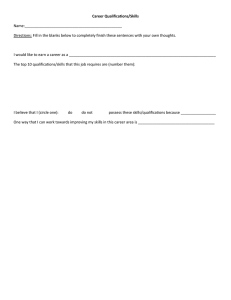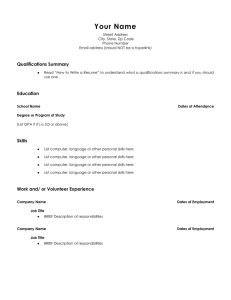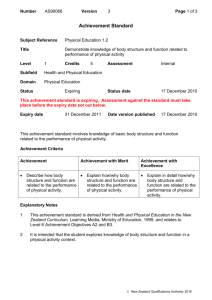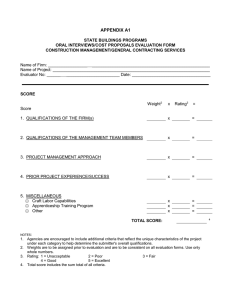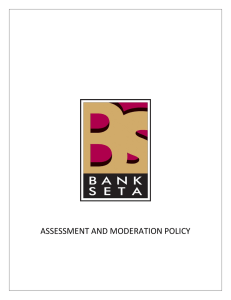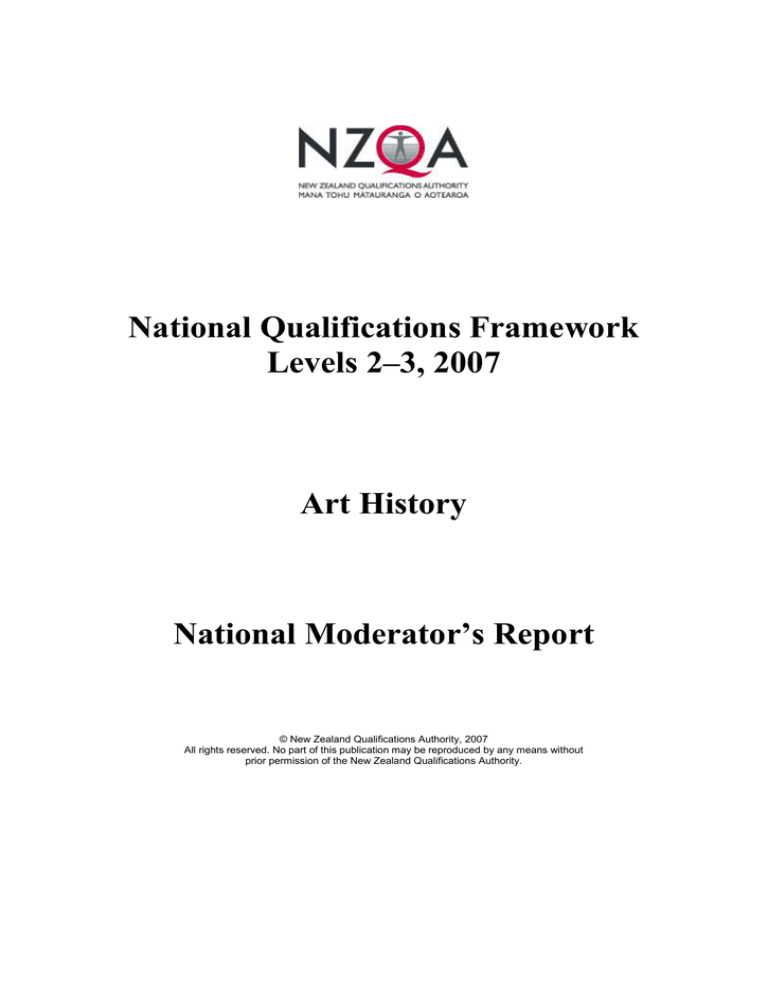
National Qualifications Framework
Levels 2–3, 2007
Art History
National Moderator’s Report
© New Zealand Qualifications Authority, 2007
All rights reserved. No part of this publication may be reproduced by any means without
prior permission of the New Zealand Qualifications Authority.
National Qualifications Framework Levels 2–3 (Art History) 2007 — page 2
NATIONAL MODERATOR’S REPORT
General Guidance for Assessors of Achievement and Unit Standards
The purpose of external moderation is to provide reassurance that assessor judgments
are at the national standard and are made on the basis of assessment materials that are
fair and valid.
All assessment materials are expected to:
•
give the learner the opportunity to meet the requirements of the standard
•
have an assessment schedule that gives evidence of appropriate learner
responses and clear judgments at all levels.
The Ministry of Education contracted subject experts to write assessment resources
for achievement standards. These are not pre-moderated. The intention is that they are
modified to suit teaching programmes and learner needs. They do not provide “rules”
but suggest different ways of assessing to the nationally registered standard.
General Overall Comment
In 2007 there was evidence of greater confidence with writing original activities
than previously and greater confidence with, and consistency of, assessor
judgements.
Most providers are now familiar with NZQA requirements in supplying correct
achievement standard version numbers and the requirement for an assessment
schedule that contains both judgment and evidence statements. Where an assessment
schedule does not have both judgment statements and evidence statements the activity
is said to “not meet the national standard”.
1. When modifying and designing activities, care needs to be taken to ensure that the
achievement criteria are fully met.
2. When using words and phrases other than those of the achievement criteria, the
wording needs to be carefully chosen so as not to alter the criteria.
3. When modifying sample web activities the assessment schedule needs to be
modified to reflect any changes made to the assessment activity, and in particular, a
new evidence statement needs to be written to ensure relevance to any new context.
Judgement Statements describe the quantity and/or quality requirements the
student needs to meet in order to meet the standard.
Evidence Statements are, for Art History, usually examples of possible student
responses to the tasks. They serve to demonstrate the quality of performance
required at each level of achievement so that the assessor can evaluate a
student answer through comparison with the sample evidence given in the
schedule.
National Qualifications Framework Levels 2–3 (Art History) 2007 — page 3
Plagiarism can be a problem with some submissions. Students need to be aware that
where authenticity is in question and it is difficult to ascertain whether their work is
their own, students may not gain the grade expected.
AS 90229: Examine techniques used in art
To achieve this standard, students need to identify and describe techniques, and
describe the effects created through those techniques. Teachers need to ensure that
students understand that their focus must remain on discussing techniques and
effects and ensure that where stylistic characteristics are discussed they are linked to
the way in which techniques are used by the artists, eg the painterly techniques used
to create particular light, colour or other effects.
AS 90231: Research an art history topic
Evidence of the gathering and organisation of information needs to be submitted for
moderation alongside the student’s communication of response.
AS 90232: Examine art works in their environmental contexts
The intention of the standard is to examine art works such as sculptures, carvings,
murals, memorials, etc. that are located in local environments. The standard does not
work well when art works in texts or on the net are used, because students are asked
to consider the environmental contexts for the works.
AS 90492: Examine media and processes in art
For Achievement, students are required to describe art media and the processes used
for making art, and compare the effects of media and processes on specific art works.
It is important that students are clear that they need to focus on how the media and the
processes generate particular effects.
For Achievement with Merit, students are required to consider how important the
media and processes are in producing different effects.
For Achievement with Excellence, students must evaluate the impact of media and
processes upon both style and content in art.
While some improvement was evident in 2007, students still require guidance to
understand that this standard focuses upon media and processes and that where
stylistic aspects are discussed, as required for Excellence, the stylistic characteristics
that are relevant are those that are an outcome of the particular media and processes
used by the artist(s).
AS 90493: Examine a theory and its role in art
Most providers used the TKI activities or modified them successfully.
For Achievement, students are required to outline a theory and demonstrate how the
theory is evident in art works.
National Qualifications Framework Levels 2–3 (Art History) 2007 — page 4
For Achievement with Merit, explanation of the relationship between the theory and
the art works is required.
For Achievement with Excellence, students need to evaluate the significance of the
theory for the art of a particular artist, period or movement. The evaluation should be
substantial. Where such a judgement was made this may have occurred due to a
misunderstanding of the nature of assessment schedules. As is the case with many of
the schedules that accompany TKI activities, assessment schedules need only contain
sample evidence. The quantity of work required should also be indicated (see
Judgement Statements, above).
AS 90494: Investigate an art issue
For Achievement, students are required to define an issue in art. This issue may be
selected by the student or by the teacher. Students also need to describe points of
view on the issue, backed up by relevant evidence.
For Achievement with Merit, students need to go beyond a description of points of
view to explain the points of view.
For Achievement with Excellence, students evaluate the points of view in order to
draw justifiable conclusions. Therefore students need to justify their conclusions
through explanation and evidence.
Students need to keep their focus upon the selected issue and viewpoints. Students
do sometimes slip into broad discussion as though they are providing all they know
about a ‘topic’ rather than discussing the issue in relation to varied points of view.

